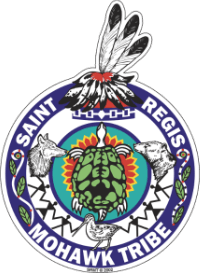3.03.050 Issuance of Summons and Court Procedure
(a) The Animal Control Officer or an officer from the Saint Regis Mohawk Tribe Police Department may issue a Summons with Notice of Violation to a person when, based upon personal observation, eye witness reports or investigation, the officer has reasonable cause to believe that the Owner has committed a violation of this chapter. The Summons and Notice will detail the offense, the time, date and location of the offense and an exact time and date at which the Owner must appear at the Saint Regis Mohawk Tribal Court.
(b) If the Summons and Notice is for a determination that a dog is "dangerous" the Animal Control Officer shall have the burden to demonstrate the dog is "dangerous" by a preponderance of the evidence. The Animal Control Officer can meet this burden with eyewitness statements, sworn testimony or any other evidence. The evidence does not need to be competent or meet other evidentiary standards, but can be hearsay. Once the Animal Control Officer has met the burden it shifts to the Owner to demonstrate by clear and convincing evidence that the dog is not "dangerous". If a dog has caused Serious Physical Injury then the Animal Control Officer shall file documentation such as medical reports, photographs, or police reports showing Serious Physical Injury and the Owner shall need to rebut the presumption that the dog is "dangerous". The Tribal Court shall then make a written determination whether (1) the dog is "dangerous"; (2) the dog is to be destroyed, if not to be destroyed then the conditions the Owner must abide for ownership; and (3) a fine should be assessed to the Owner.
(c) Once a there is a judicial determination that a dog is dangerous and there has been Serious Physical Injury, the victim may sue the Owner to recover in a separate action for any medical expenses for which the injured party cannot recover from another source and for any veterinarian expenses an Owner's animal may have suffered.
(d) For any other type of Summons, the Court shall determine based upon a preponderance of the evidence whether a violation of this chapter occurred. The Animal Control Officer shall have the burden by a preponderance of evidence of showing a violation of this chapter. The evidence does not need to be competent or meet other evidentiary standards, but can be hearsay. Once the Animal Control Officer has met the burden it shifts to the person summoned to demonstrate by clear and convincing evidence that it did not violate this chapter. The Tribal Court can then make a determination whether a violation of this chapter has occurred.
(e) The Owner shall pay any applicable fine within 30 days from the date the fine was issued in full satisfaction of the violation.
(f) The fine for a violation of this chapter shall be $50.00 for a first offense and up to $500.00 for each subsequent offense except as otherwise outlined in this chapter in Section 3.03.120.
(g) For anyone who is summoned to Tribal Court and found to be in violation of this chapter shall be assessed a court fee as determined by separate Tribal Council Resolution which may be amended from time to time in addition to any fine.
(h) Any fine or court fee shall be payable within thirty (30) days of being assessed. Failure to pay a fine may subject the person to contempt of court proceedings or the person's name may be transferred to the Tribal Council's designee for collection under the Tribe's Good Standing Policy.
